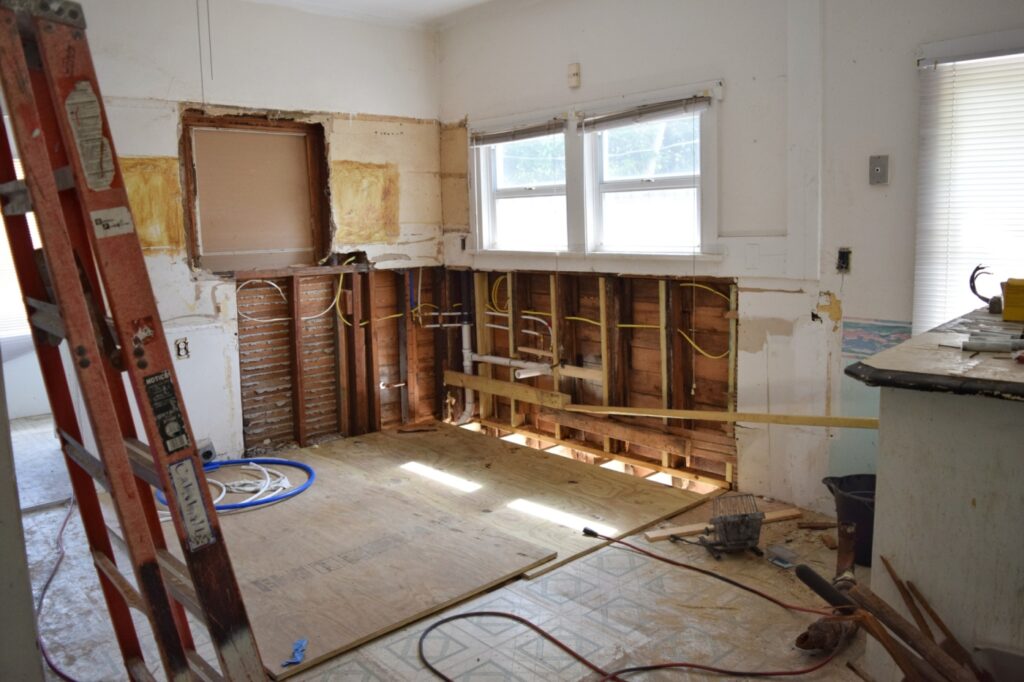
By Annie Millerbernd | NerdWallet
The pandemic wreaked a specific kind of havoc on home remodeling. Swelling demand for construction projects collided with material and labor shortages, creating a home improvement traffic jam that has lasted into 2022.
“The pandemic threw a very large wrench into everything, but in particular housing,” says Abbe Will, associate project director of the Remodeling Futures Program within Harvard’s Joint Center for Housing Studies.
Renovating could be as expensive and stressful a process this year as it was in 2021. With the Federal Reserve expected to increase the federal funds rate several more times this year — a move that drives up interest rates — financing a renovation may seem even less appealing.
Here’s what difficult remodeling conditions mean for home improvers this season and how to prepare.
Expect supplies to remain low
This year, it may be difficult to find a contractor and the materials to do a remodel. Once you do, both will probably cost more than they did before the pandemic.
Workers and materials are in short supply, which has a big role in rising costs. Neither issue is expected to be resolved this year, says Paul Emrath, vice president of survey and housing policy research with the National Association of Home Builders.
The construction industry has a labor problem that predates the pandemic, Emrath says, but it was exacerbated as workers quit or became sick and unable to work at job sites in the last two years. That means even as people return to work, there will still probably be too few construction workers.
Building materials faced a new problem during the pandemic. Supply chain issues that rippled through many industries created an unprecedented materials shortage in which all building materials were in short supply at once, Emrath says.
Materials shortages are the biggest driver of higher remodeling costs. Easing supply chain issues could lower costs; however, “no one really expects that to happen for materials in 2022,” he says.
Homeowner demand could taper
The pandemic triggered “phenomenal demand” for remodeling projects, which has increased each quarter since the end of 2020, Will says.
Last year, remodeling spending rose 9% year over year, and it’s projected to rise 17% this year, according to Will. Historical average annual growth is about 5%. Will attributes the growth to many factors, including employees working from home, delayed projects from 2020, aging homes, nesting new homeowners and natural disaster preparation.
But spending could grow more slowly toward the end of the year as borrowing against equity becomes a less attractive option. Home values are expected to steadily rise, rather than skyrocket, meaning homeowners won’t accrue equity as quickly as they did before. At the same time, Will says the Fed’s expected rate hikes will raise rates on home equity loans and lines of credit.
“Higher interest rates for homeowners who are interested in tapping their home equity or using other financing methods could cut back on some of that demand, which then relieves some of this pressure,” Will says.
How to plan your remodel this season
Neither Will nor Emrath sees a reason to delay a renovation in hopes that it will be easier or cheaper next year. In fact, Emrath says rising rates could be a signal to start a remodel sooner than later if you plan to finance it.
Will’s advice to remodeling homeowners: Be flexible with materials and your timeline.
“Have some patience working with contractors and getting on their schedule, and be as flexible as you can be when they might be able to start work with you,” she says.
A delayed project could be an opportunity to build your remodeling savings. Paying in cash for discretionary and non-urgent purchases is a better alternative than going into debt for them, says Jay Zigmont, a Mississippi-based certified financial planner. It’s also an interest-free financing option.
If you choose to finance, look for the least expensive borrowing option, Zigmont says.
Right now, that may still be equity financing, which often has single-digit annual percentage rates. A home equity line of credit could work well for a project with a changing timeline, because you can draw money as you need it.
Personal loans are available for homeowners with little or no equity. Rates are between 6% and 36% — higher than most equity financing, but lower than credit cards for those with strong credit. Loan amounts for qualified borrowers can be up to $100,000.
Zigmont recommends piecemealing the upgrade if you want to see progress this year but don’t have enough cash to pay for a full renovation. Start with what you’re most excited about — new appliances or tiling, for example — and consider saving up for the rest.
More From NerdWallet
